Peter Huessy, president of defense consulting firm GeoStrategic Analysis, is an expert on nuclear issues and organizes the Congressional Breakfast Seminar series for the Air Force Association.
10 Reasons The US Should Build New Nuclear Missiles, GBSD
Posted on
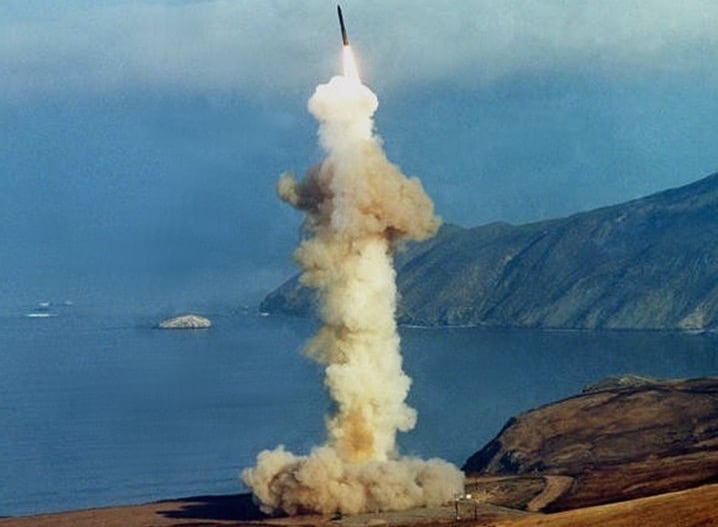
Minuteman III test launch
CORRECTED: Minuteman Was First Solid-Fueled ICBM; Jon Wolfsthal’s name
The first solid-fueled InterContinental Ballistic Missile, Minuteman 1, was deployed some 55 years ago on the same day that President Kennedy announced that Soviet missiles were being deployed in Cuba. At the end of the Cuban missile crisis, President Kennedy credited the newly deployed Minuteman ICBM as his “ace in the hole” that allowed the crisis to be settled peacefully.
Fast forward to today. The United States Air Force has selected two contractors to compete for designing the next land-based ICBM, the Ground Based Strategic Deterrent (GBSD). This will be the first new ICBM since the Peacekeeper missile was deployed in 1986.(The current Minuteman III guidance and propulsion systems went through a nearly 20-year service life extension program (SLEP) to keep the Minuteman III missile viable through 2030.)
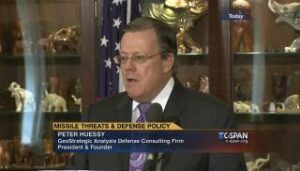 Several highly respected Washington-based think tanks have assessed the US nuclear deterrent and how best to ensure future deterrence. A common theme has been criticism of the land-based leg of the nuclear triad. Most of the criticism has largely relied on faulty assumptions about the strategic stability aspects of ICBMs, their flexibility and their costs.
Several highly respected Washington-based think tanks have assessed the US nuclear deterrent and how best to ensure future deterrence. A common theme has been criticism of the land-based leg of the nuclear triad. Most of the criticism has largely relied on faulty assumptions about the strategic stability aspects of ICBMs, their flexibility and their costs.
For example, an often-repeated and primary argument used in these studies is an assertion that our land based missiles are “vulnerable” because their silo locations are known.
Categorically incorrect.
First, America has 400 deployed missiles spread over tens of thousands of square miles in 450 silos in five western states. Any adversary would find it impossible to destroy all 450 silos in one strike, even if a very high percentage of an adversary’s nuclear forces were used. (Only Russia possesses a nuclear force large enough to even consider such an act.)
Second, in a crisis the president can be sure our land-based missiles are available for whatever deterrent mission is required, without any need for a quick launch decision.
Far from being vulnerable, these missiles are highly survivable. This means any attack on a small number of the missiles is irrational; an attempted attack on all of them is simply not executable.
Thus, as far as strategic stability is affected, ICBMs contribute a great deal.
Third, each Minuteman missile possesses only one warhead, making them unattractive targets. The Russians would have to use at least two warheads to try and take out each American missile silo, a very expensive rate of exchange.
Fourth, even if you theoretically assume all Minuteman missile silos were successfully destroyed in an attack, our complementary nuclear submarine and bomber forces, boasting hundreds of warheads, could be launched in retaliation. Knowing this, no rational adversary would take such a risk and attack us first.
Fifth, one of the most severe critics of Minuteman has recently admitted the central argument of the ICBM vulnerability is unfounded.
Jon Wolfsthal, formerly Vice President Biden’s adviser on nuclear matters on the National Security Council, admitted at a conference held by the Center for International and Strategic Studies that Russians would have to be irrational to attack the continental-US based Minuteman force because they could not destroy all the missiles.
Wolfshal also acknowledged any such Russian strike would most certainly precipitate a retaliatory submarine and bomber strike by the United States, further reinforcing the irrationality of any such hypothetical Russian strike.
Frank Miller, a former top OSD and White House nuclear policy official, turned the argument around to show how fallacious it is. In remarks to a Capitol Hill seminar hosted by the Mitchell Institute on June 6, Miller asked whether critics of the American ICBM force survivability would urge an American President to strike vulnerable Russian land-based missiles, just as they assume a Russian President would seriously contemplate striking the United States.
“You’re a very senior adviser to the president of the United States,” he said. “You go into the Oval Office and say ‘Mr. President, I’m worried about the Russians and I think our best option is to strike first and eliminate their [ICBM] nuclear forces. I know they have missile detection and warning systems, and in the Russian case perhaps a ‘dead-hand’ launch capability, and they will see us coming, but maybe we can get lucky.”
Mr. Miller continued: “In the famous Cold War movie classic “Dr. Strangelove”, General Buck Turgidson recommends the [US] President try and pre-emptive disarming strike against the Soviet Union, declaring “Mister President, I’m not saying we wouldn’t get our hair mussed. But I do say no more than 10- to 20-million killed, tops! Depending on the breaks.”
Concluded Miller: “Can anybody seriously envision such a scenario? The notion that any President of the United States would indulge in such a cosmic throw of the dice is completely and utterly unbelievable. There are sufficient issues to talk about in nuclear deterrence and force modernization policy without indulging in such nonsensical flights of dark fantasy.”
Sixth, the assertion that during a crisis the president would have only a few minutes during which to decide to launch our ICBMs is unfounded. No such attack is likely; nor is such an attack rational, as we explained above.
The US capability to respond with other elements of our nuclear triad also ensures an enemy cannot achieve any objective by striking the United States first. Thus, the structure of our deterrent means that in a crisis the time during which our president can decide on the proper course of action can be considerably expanded. No sudden decision is required.
Seventh, missing from most assessments addressing the stability of the ICBM leg of the triad is a key — and illogical — assumption. To decide unilaterally to take down our Minuteman force assumes the remainder of our triad would remain safe from attack for decades into the future.
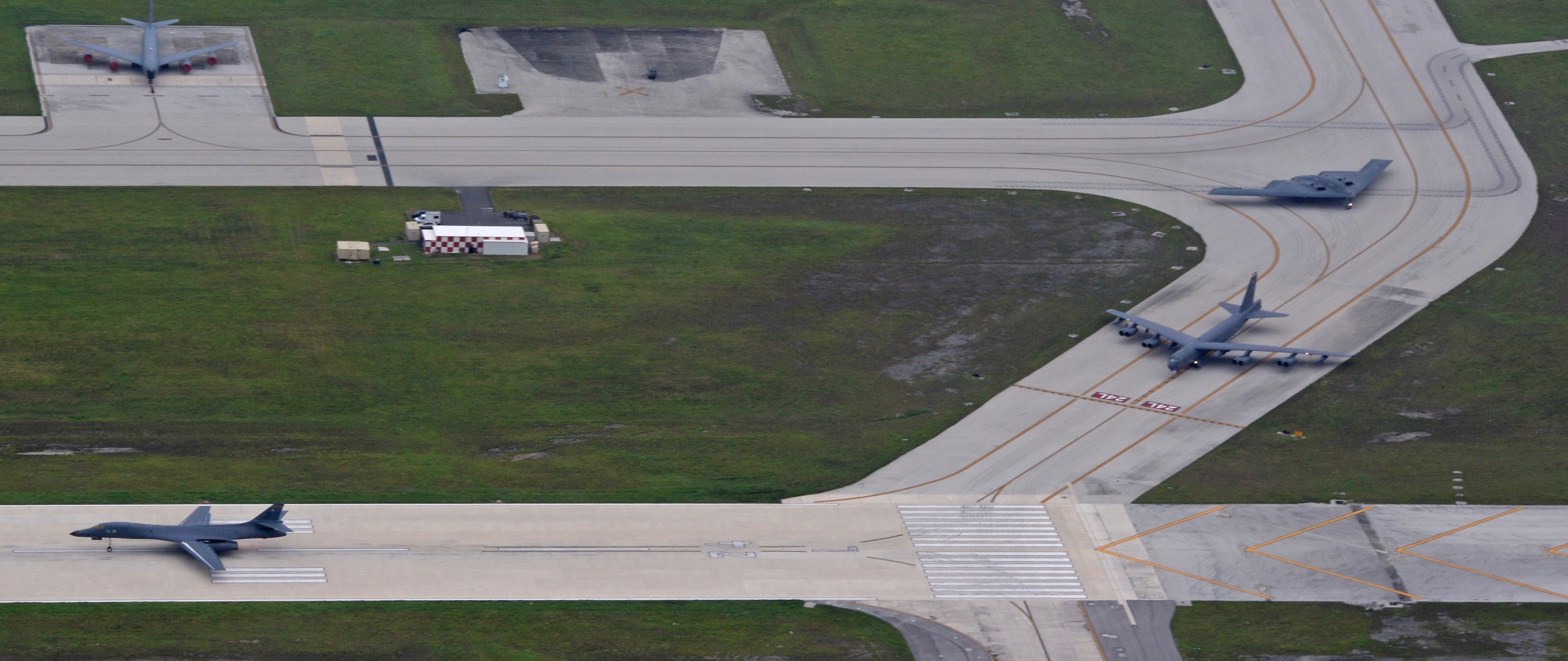
A B-52, B-1 and B-2 taxi at Andersen Air Force Base, Guam in 2017, the first time all three conducted integrated operations in PACOM’s AOR.
And, of course, an attack on the Minuteman missile force is a direct attack on sovereign U.S. soil in the continental United States. Such as attack could not be ambiguous, small or defy attribution. It would be a highly visible attack on the contiguous territory of the US, striking at the very sovereignty of the United States. We would most certainly know the return address of the attacker, thus making a counter strike almost automatic.
Eliminating Minuteman would leave the United States with only five key US based nuclear targets — our three bomber bases and two submarine bases.
Thus, without 450 land-based silos and their associated 45 launch control centers, these five assets plus our five to seven submarines at sea, would constitute the entirety of our nuclear deterrent.
It simply doesn’t make sense to make it markedly easier for a nuclear armed adversary to denuclearize the United States in one or a small series of strikes having to find and take out a dozen or fewer assets compared to over 500 today.
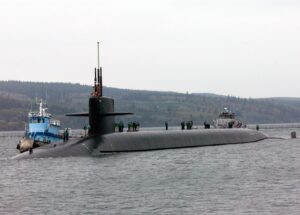
Nuclear missile submarine USS Louisiana arrives at Naval Base Kitsap, Silverdale, Wash.
Our five bomber and submarine bases are also soft targets, ones that can be easily destroyed. We know this. But the future could mean a breakthrough in anti-submarine warfare, putting at risk our five to seven submarines at sea at any one time. How could we responsibly assume no such future technology breakthrough would be possible? No responsible military planner or national leader would make such an assumption.
Thus, while submarines at sea are highly survivable today, future advances in technology may change that, making a robust ICBM force a key insurance policy and critical to maintain deterrence now and into the future.
Unfortunately, even if the vulnerability argument is overcome, and it is recognized there is a sound requirement for an ICBM leg of the nuclear triad, some analysts still do not think we need the GBSD. An alternative discussed is keeping the existing Minuteman force and funding a Service Life Extension Program (SLEP). The assumption is such a program would be relatively inexpensive, be limited largely to a redo of the ICBM propulsion system, and provide the flexibility and capability to effectively respond to emerging threats through the infusion of modern technology.
However, that is not the case. Relying on a refurbished 55-year-old missile to remain credible for future decades to come when a new, better, more cost-effective and more capable system can be built does not make sense.
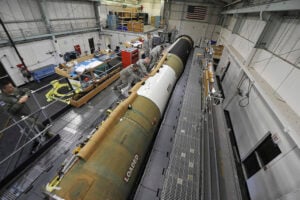
Airmen install a new cable run on an aging Minuteman III missile.
Any SLEP would most likely find an array of components that are no longer made and would be costly to make. Unanticipated upgrades may simply not be possible with the current system, adding to costs and possibly subtracting from capabilities. Meanwhile, our nuclear armed adversaries are constantly expanding their nuclear capability.
Eighth, the land-based missile force requires greater range and accuracy as improved technology allows our adversaries systems to become more resilient. The GBSD system will provide the required improvements along with increased durability and cost-effective maintenance. ICBMs will remain a highly cost-effective leg of the nuclear triad. Engaging in a costlier SLEP will not meet emerging adversary threats.
Ninth, the new GBSD system will remain operational for six decades. This includes a 30-year mid-life replacement of the propulsion system, which will be required of any ICBM alternative. Even with the upgraded prolusion system, it is the least expensive of all ICBM future options. Just doing a SLEP is not a viable alternative as a new ICBM would have to follow at the end of the SLEP sustainment.
Tenth, since Minuteman went on alert in October 1962, the missile system has perfectly executed its deterrent mission for over 32 million minutes. No president has ever ordered a Minuteman missile to be launched, despite numerous crises, terror attacks, conventional wars and stark challenges to American interests. That is an extraordinary record of providing stable and effective deterrence.
Examined in the light of these 10 factors, going forward with a new ICBM force makes great sense. And the best ICBM force would be one based on the GBSD, as it provides the nation the deterrent capability required to meet emerging threats, the flexibility to embrace emerging technology and the least costly option in providing a sustainable, stabilizing, and flexible land-based ICBM force.
Subscribe to our newsletter
Promotions, new products and sales. Directly to your inbox.
